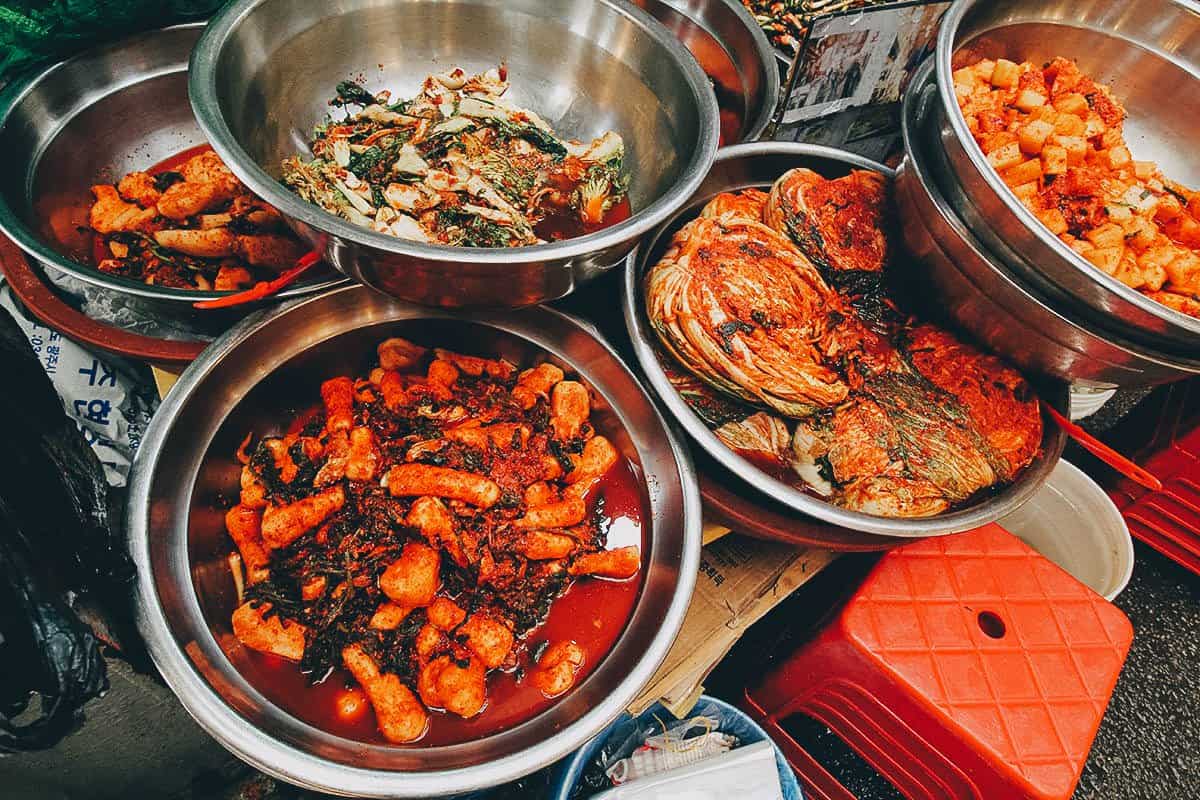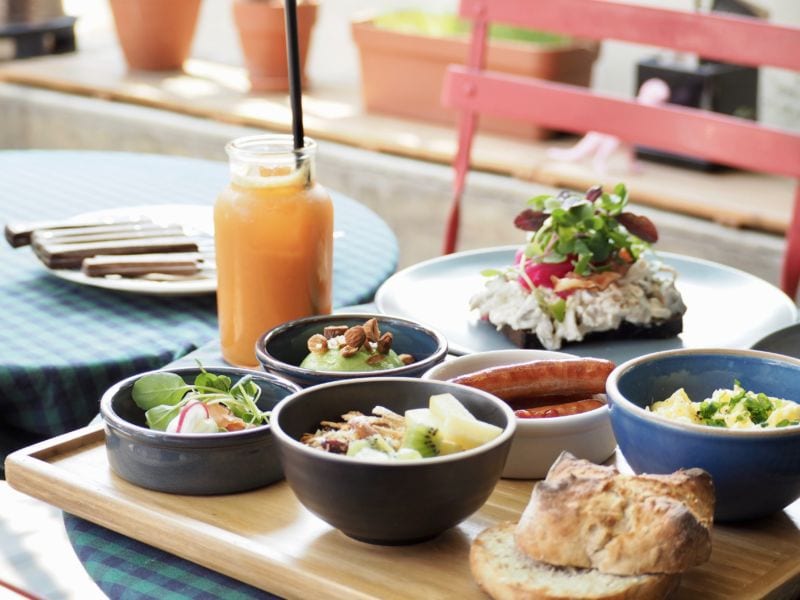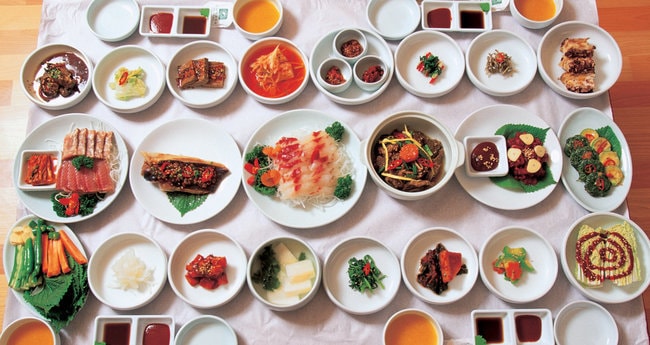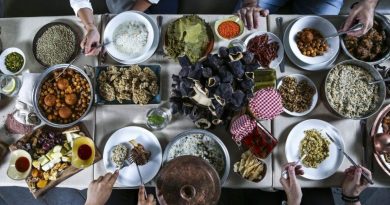Land of the Morning – Seoul: A Food Culture Journey
Korean food culture is an interesting thing to study, especially in regards to the land of the morning – seoul, the capital of South Korea. The cuisine, much like the culture itself, has developed and evolved over time, drawing influence from China and Japan as well as neighboring countries like Russia and Germany. But what makes Korean food so special? Let’s explore some of the defining characteristics that make it so unique.
The Main Dishes

When it comes to food, Seoul offers a variety of unique and delicious cuisines. From Korean BBQ to kimchi jjigae, there’s something for everyone to enjoy. And don’t forget about the side dishes! From rice to noodles, there’s something for everyone to taste.
Of course, no meal is complete without drinks. So be sure to try some soju or makgeolli with your meal. Makgeolli is an alcoholic drink made from sweetened fermented rice. It can be served warm or cold and usually consumed in one gulp after which another glassful is poured into the goblet.
Meanwhile, soju is also an alcoholic drink but distilled from grains such as barley, wheat, sweet potatoes, tapioca, sugar cane etc., instead of using just plain old rice like they do with Makgeolli.
Some people have also said that the Kimchi stew (kimchi jjigae) is one of their favorite main courses. Koreans love to eat rice and serve it with everything from fish to meat. They often eat rice with every dish, even soup. Rice is considered essential for all meals. One of my favorite dishes would have to be the bibimbap, which literally means mixed rice. Bibimbap is served in a hot stone bowl and consists of white rice topped with sauteed vegetables (usually including mushrooms), beef, egg and chili sauce. The ingredients are stirred together before eating because each ingredient should be cooked individually when eaten separately. You can find delicious food at many different places in Seoul- resturants, marketplaces, streets and more!
Soups, Kimchi and Hot Pot

Kimchi probably comes to mind when you think of Korean food. Kimchi is a cabbage dish that is fermented and has a spicy, sour taste. It is usually served as a side dish, but can also be eaten as a main course. Other popular soups in Korea are doenjang jjigae (soybean paste soup) and galbi tang (beef short rib soup). Hot pot is also a popular dish in Korea. It is a stew that is cooked at the table and usually contains vegetables and meat. After the broth is boiled, raw ingredients are added to cook them. The type of hot pot differs depending on which region it’s from in Korea. For example, gukseonbap-guk (literally duck soup) is made with duck broth, while baekseonbap-guk (literally white radish soup) is made with white radish broth.
One last popular Korean dish worth mentioning is bulgogi which consists of thin slices of beef marinated in soy sauce and sesame oil then grilled or fried until crispy on all sides. Many Koreans will eat this dish with rice and banchan (side dishes), such as kimchi, pickled cucumbers, or sautéed spinach. Bulgogi is often accompanied by lettuce wraps and a number of dipping sauces like ganjang (a thick soy sauce), gochujang (a savory, sweet red pepper paste), or ssamjang (a thick condiment made from gochujang mixed with minced garlic, sugar, sesame seeds, salt, and water).
Banchan (반찬), Korean Side Dishes

When you sit down for a meal in Korea, you’re not just getting a main dish and calling it a day. You’re getting an entire experience complete with multiple side dishes, or banchan (반찬). Banchan are usually small, but they pack a lot of flavor. And there are always at least a few different kinds to choose from. What sets these small bites apart is how much care goes into each one.
Take kimchi, for example: no two batches taste exactly alike because it’s made by hand with love and local ingredients.
It can be hard to know what is what when you’re sitting down for your first Korean meal, so we’ve put together this guide on five common types of banchan that will keep your taste buds guessing! Bibimbap 위부다빗밥 : Rice mixed with vegetables, served with red pepper paste. Kimchi 김치 : Fermented cabbage made from red pepper paste, garlic, ginger, fermented fish sauce, water and salt. Naengmyeon 냉면 : Thin noodles served cold in a sweet beef broth soup flavored with soy sauce.
Breakfast , Lunch , Dinner

In a country where meal times are more like an event than just grabbing something to eat, it’s no surprise that the food culture in South Korea is rich and diverse. From street food to gourmet restaurants, there’s something for everyone in Seoul. And with so many options, it can be hard to know where to start. The broth is usually served as part of a set menu at restaurants, which may also include other dishes such as ssam (thinly sliced raw meat served with vegetables) and sundae (blood sausage).
After you’ve enjoyed your soup and meat courses, you can top off your meal with one of the famous fried doughnuts from Jinjeja Halmeoni . Another popular street food option is tteokbokki , rice cakes boiled in hot red chili pepper paste until they’re tender and chewy. You can find these spicy little snacks on practically every corner, but don’t forget to grab an icy cold bottle of Pocari Sweat along the way too! There are plenty of great restaurant options in Seoul as well. For instance, Kweon Ji Rak has been serving authentic Korean cuisine since 1990. Their specialties include samgyetang (a whole stuffed chicken stuffed with sticky rice and various herbs), kimchi jigae (stewed cabbage kimchi), jeongol (casserole), bibimbap , bulgogi
Korean Fast Food Chains

There are many fast food chains in Korea that serve up delicious, affordable meals. Among the most popular are Lotteria, McDonald’s, and KFC. While Lotteria is known for its burgers, McDonald’s offers a variety of items including chicken sandwiches and rice bowls. KFC is a fried chicken chain that also offers side dishes such as french fries and coleslaw. Some other well-known chains include Burger King, Dunkin’ Donuts, and Pizza Hut. Other chains offer much more than just quick and tasty eats. For example, there is Gong Cha which serves specialty milk teas; Cafe Droptop which specializes in bingsu shaved ice desserts; Taco Bell which specializes in Mexican cuisine; and Gino’s Spaghetti House which serves Italian food. Although it may seem like an unusual combination, Koreans love both pizza and pasta! When you’re hungry for something spicy, check out Hot Stone Bowls at CP Chicken where you can order your favorite Korean dish on top of a bowl of piping hot stone soup. Another unique place to eat is Banchan Danggui: think grilled beef tongue served with lettuce wraps, or fried potato wedges coated with sesame seeds and sea salt. Delicious!
Restaurants

In Seoul, you’ll find a restaurant for every taste and budget. From hole-in-the-wall local spots to Michelin-starred dining experiences, there’s something for everyone. And don’t forget the street food! Be sure to try some of Korea’s signature dishes like kimchi, bibimbap, and bulgogi. For dessert, indulge in Korean ice cream made from milk, sweetened condensed milk, sugar syrup, and sometimes honey or fruit extract.
Korean cuisine is also famous for its use of fermented foods such as soybean paste (doenjang), fish sauce (garu), salt fermented vegetables (kimchi) pickled cucumbers (oi-sobagi) or radish (kaktugi).
Kimchi is often eaten as part of a rice dish called gukbap. The base is usually white rice but brown rice can be used too. Thin strips of beef, egg, and green onions are mixed into the rice. Then spicy cabbage kimchi is served on top. Additional toppings include sliced boiled eggs and anchovies. Seasoning ingredients such as vinegar, hot pepper flakes, ground ginger, garlic powder, and black pepper are mixed together in a small bowl with sesame oil to make gochujang sauce which can be added at will according to personal preference.



